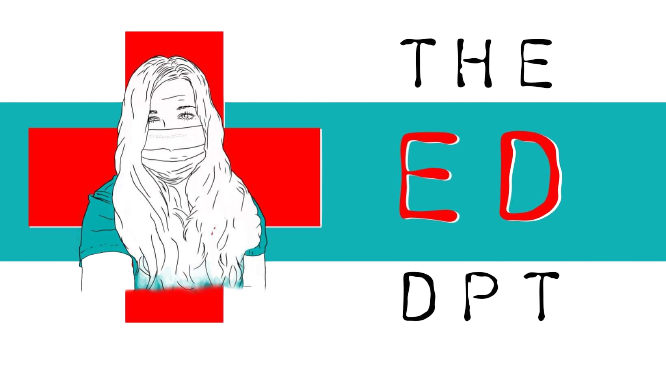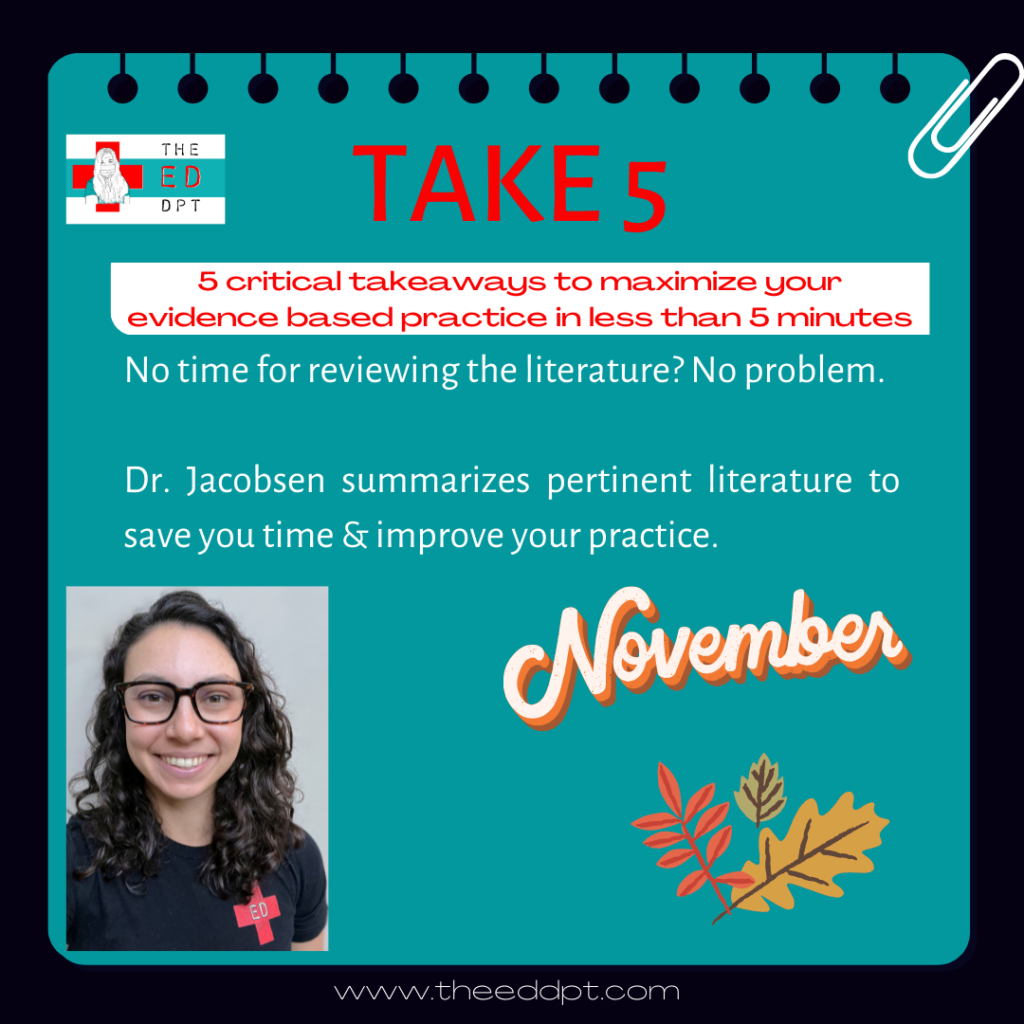
Take 5 – 5 Critical Takeaways to Improve your Practice
- A vestibular clinical pathway in the ED is associated with improved quality and efficiency of care.
- EDs should implement evidence based vestibular clinical pathways to support the ED and follow up outpatient care.
- Quick access to vestibular PTs in the ED with easy processes to ambulatory/outpatient care needs to be considered when establishing a vestibular clinical pathway in the ED.
- Vertigo is not a diagnosis, it is a symptom.
- The clinical pathway must be evidence based and updated based on the TiTrate model.
Take a Deeper Dive
A patient comes into your ED with dizziness and a differential diagnosis including stroke, cardiogenic cause, or peripheral vertigo. You are asked to consult on this patient at some point, but when should you examine the patient? What do you need to look out for? How can you help this person today and ensure adequate follow up? Who else needs to be involved? And if there isn’t a PT available to support this patient, then what happens to them?
Along with improving patient outcomes, vestibular clinical pathways in the ED may broach other systemic concerns like health care costs and the long term effects of untreated or poorly managed vestibular dysfunction.
The study Do Vestibular Physiotherapy and a Clinical Pathway in the Emergency Department Improve Management of Vertigo? by Stewart et al. attempts to answer how a vestibular clinical pathway in the ED improves outcomes, quality and efficacy of care. Here are the five biggest takeaways from this journal article.
Let’s Break it Down
A vestibular clinical pathway in the ED is associated with improved quality and efficiency of care.
Quality of care in this study is defined as pathway adherence. Efficiency of care is defined as measuring frequency of admissions, ED length of stay, hospital length of stay, readmission rates to the ED and hospital within 30 days, and frequency of adverse events. In this study, they found that the clinical pathway led to significantly more vestibular PT exams and evidence based management (quality). The post clinical pathway group also had reduced length of stay in the ED and wait time for vestibular assessment (efficiency). The post-cohort group did have increased admission and hospital length of stay rates, in which the authors attribute it to complexity of patient presentation, access to vestibular PT exam, and mobility issues. With improvements in quality and efficiency of care, there is a strong argument for presence of vestibular PTs in the ED with utilization of an evidence based pathway.
EDs should implement evidence based vestibular clinical pathways to support other ED providers.
This study attempts to create solutions for barriers in vestibular management including time pressure to manage patients with vestibular dysfunction, increased patient volumes in the ED, trained providers in vestibular assessment, overprescription of medication, patient readmission rates, and misdiagnosis. Based on the results listed in take away #1, adherence to the pathway did significantly improve ED length of stay and wait times, which does help address patient volume and management of vestibular dysfunction appropriately.
Quick access to vestibular PTs in the ED with easy processes to ambulatory/outpatient care needs to be considered when establishing a vestibular clinical pathway in the ED.
Follow up with several different providers like physical therapy, neurology, audiology, and ENT are all possible referrals that may be warranted depending on the type of vestibular condition the patient has. If the patient is assessed appropriately and a diagnosis is provided by someone trained in vestibular assessment in the ED, it is also important that the patient receives follow up with appropriate providers, preferably in a streamlined process that is timely and easy for patients to access. Ambulatory, or outpatient care, may help prevent readmission to the ED and may improve short and long term patient health outcomes if they are being treated appropriately for their diagnosis.
Vertigo is not a diagnosis, it is a symptom.
Telling a patient that they have “vertigo” does not inform them or other providers about what dysfunction they have and why. Clinically, people may experience dizziness or vertigo due to central or peripheral nervous system, cardiogenic, or stroke causes. Because someone with a stroke who is experiencing vertigo is going to be treated very differently and with greater urgency than someone with vestibular neuritis (peripheral cause), misdiagnosis or using the blanket term of “vertigo” can be detrimental to the patient and their health outcomes. Using a vestibular clinical pathway that leads to diagnosis of the patient condition can lead to better management, appropriate use of imaging, and relevant follow up care.
The clinical pathway must be evidence based and updated based on the TiTrate model.
The HINTS exam is very sensitive in ruling out stroke and should be used to determine if an acute vestibular syndrome is peripheral or central in nature. However, you cannot use the HINTS exam on every patient. One critique of this article is that this study was done without use of the TiTrATE model in their vestibular clinical pathway. THe model stands for Triage, Timing, Triggers, Targeted Exam, and Test (2). In the article TiTrATE: A Novel Approach to Diagnosing Acute Dizziness and Vertigo, by NewmanToker and Edlow, their model can be followed regardless of symptom type and helps target exam and treatment options based on patient symptoms. The clinical pathway used in the Stewart et al. article is hard to follow, which begs the question of how easy it would be to implement in a fast paced environment like the ED with a robust and interdisciplinary staff. What the outcomes of this study would be if the TiTrATE model was used instead?
*I highly recommend looking at Figures 1 and 2 in the TiTrATE article for a great visual depiction of the model.
There you have it! I know some PTs shy away from the opportunity to develop their skill set in vestibular PT. However, with appropriate training and continuing education and use of vestibular clinical pathways, PT practice in the ED can improve patient outcomes and hospital processes for the better. With the support of this study, I hope we can continue learning from each other and working together to pave a new and better standard for PT vestibular management in the ED.
- Stewart V, Rosbergen I, Tsang B, Hoffman A, Kwan S, Grimley R. Do Vestibular Physiotherapy and a Clinical Pathway in the Emergency Department Improve Management of Vertigo? OTO Open. 2022;6(3). doi:10.1177/2473974X221119163
- Newman-Toker DE, Edlow JA. TiTrATE: A Novel, Evidence-Based Approach to Diagnosing Acute Dizziness and Vertigo. Neurol Clin. 2015 Aug;33(3):577-99, viii. doi: 10.1016/j.ncl.2015.04.011. PMID: 26231273; PMCID: PMC4522574.

